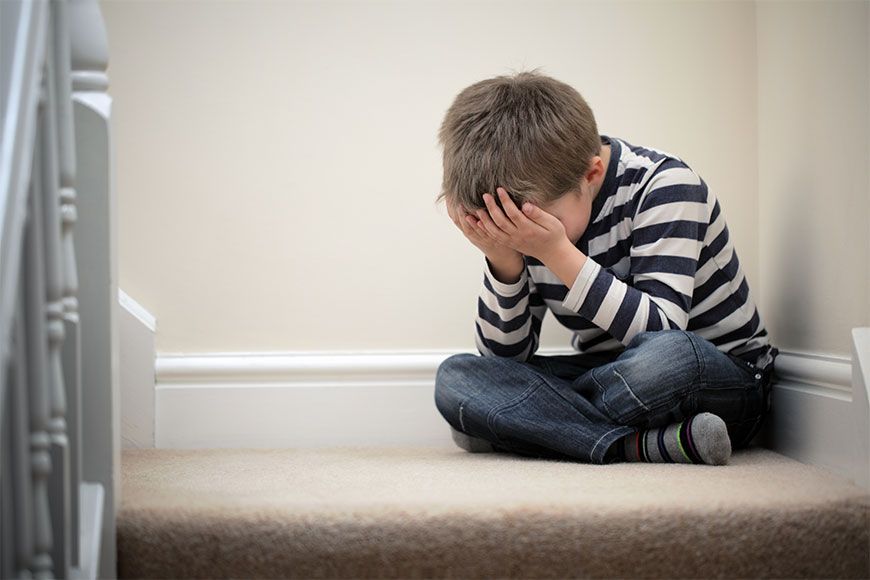By Shreya Makhija, Counselling Psychologist
Updated on March 19, 2024
Published on March 19, 2024
Fact Checked

Get latest news, updates, and trends on mental well-being

UNICEF describes stress as “a common feeling that affects children as much as adults, just differently.”
Stress as an experience has only been focused on in the adult population. We tend to assume that due to the age or seeming simplicity of life for children, they are stress-free. However, that is not true. Studies indicate that adults often perceive childhood as uncomplicated, possibly because they are familiar with life events and developmental stages. However, for children, encountering these milestones for the first time can be just as stressful as significant experiences in adulthood.
Stress is usually experienced when there is a different, novel, pleasant or unpleasant experience. It is an emotion experienced when the demands made by the environment supersede an individual’s ability to cope with or fulfil them.
Children have a constantly developing brain. This means, their ability for language, communication and understanding emotions too is developing as the brain matures. This is a key developmental factor that makes the experience and expression of stress different for children. Any positive or negative event, interaction or experience can lead to stress if it overwhelms the child’s current capacity to cope with it.
For young children, tensions at home, quarrels, death, academic goals, disagreements with friends, examinations in severe cases abuse and death in the family can be some causes of stress. As children grow, alongside family discord, the sources for stress are larger changes in life like changes in friend groups, increased school work, social media and larger worldly happenings like discrimination and injustice.
Based on research, there are three types of stresses experienced by children, namely, positive, tolerable, and toxic. Positive stress, also known as eustress, fosters resilience by helping individuals function effectively under pressure. It arises from mild to moderate stressful situations, typically for a short duration and accompanied by supportive adult guidance. Examples include the first day of school, family celebrations, or making new friends. This type of stress triggers minor, temporary physiological changes such as increased heart rate and altered cortisol levels.
Tolerable stress stems from more intense but short-lived adverse events like family disruptions, accidents, or loss of a loved one. Though the body’s stress response is heightened, it remains adaptive and temporary.
In contrast, toxic stress, as defined by paediatrician Jack P. Shonkoff, refers to chronic, overwhelming stress that surpasses a child’s coping abilities without adequate adult support. Prolonged exposure to such stress without buffering relationships can harm bodily and brain systems, leading to long-term physical and mental health issues.
Experts suggest that prolonged or excessive stress can become detrimental, leading to significant health repercussions. When stress accumulates during early childhood, it can impact neurobiological processes, causing cortisol levels (stress hormones) to rise beyond normal limits. As a result of heightened cortisol levels, children may experience a range of physical, emotional, and social symptoms. Physically, they might suffer from cardiovascular issues, skin problems, increased vulnerability to illnesses, as well as complaints like headaches or stomach aches. Emotionally, they may exhibit signs of anxiety, depression, aggression, or feeling overwhelmed. Socially, they might withdraw from interactions, display aggressive behaviour towards others, or develop new habits like nail-biting or skin-picking.
Children and adolescents may not have developed the vocabulary to express their discomfort fully. Some may lack a complete understanding of what is happening, and others may get overwhelmed by the situation. Recognizing stress in children can ensure quicker support. Here are few stress warning signs for parents to look out for:
As parents, its often possible to misinterpret the signs of stress as bad behaviour or disrespect. Now that we know certain behaviours can indicate stress, it is also necessary to support a child in a beneficial manner. Here are things you can try!
It is evident that supporting children through times of stress is crucial for their overall well-being and development. By recognizing and acknowledging the challenges they face, parents can provide the necessary guidance, reassurance, and comfort to help them navigate through tricky situations. Whether it is positive stress, tolerable stress, or toxic stress, having a caring and supportive adult presence can make all the difference in how children learn to cope and thrive. Through open communication, active listening, and fostering a nurturing environment, parents can empower their children to build resilience and face life’s challenges with confidence and strength. Let’s build a supportive network to prioritize children’s mental health, ensuring a brighter future.
Alvord, M., & Halfond, R. (2019). How to help children and teens manage their stress. American Psychological Association. https://www.apa.org/topics/children/stress
Ilhamathi, I., & Raman, U. (2020). A STUDY ON TOXIC STRESS- ITS EMOTIONAL AND PSYCHOLOGICAL CHANGES AMONG CHILDREN. Catalyst- Journal of Business Management, 2(1), 1–5.
Mohler-Kuo, M., Dzemaili, S., Foster, S., Werlen, L., & Walitza, S. (2021). Stress and mental health among children/adolescents, their parents, and young adults during the first COVID-19 lockdown in Switzerland. International Journal of Environmental Research and Public Health, 18(9), 4668. https://doi.org/10.3390/ijerph18094668
UNICEF. (2021). What is stress? UNICEF Parenting. https://www.unicef.org/parenting/mental-health/what-is-stress
UNICEF. (2023, February 13). Supporting children with depression, stress, and anxiety. UNICEF South Asia. https://www.unicef.org/rosa/stories/supporting-children-depression-stress-and-anxiety
Valizadeh, L., Furnam, A., & Farshi, M. R. (2012). Journal of Caring Sciences, 1(1), 25–30. https://doi.org/10.5681/jcs.2012.004